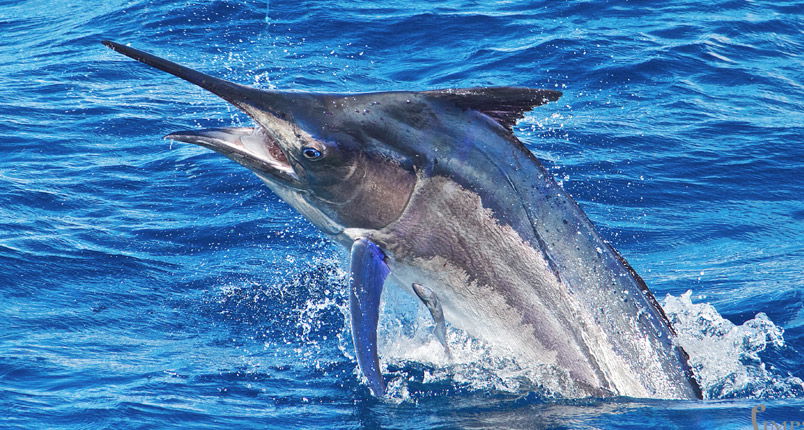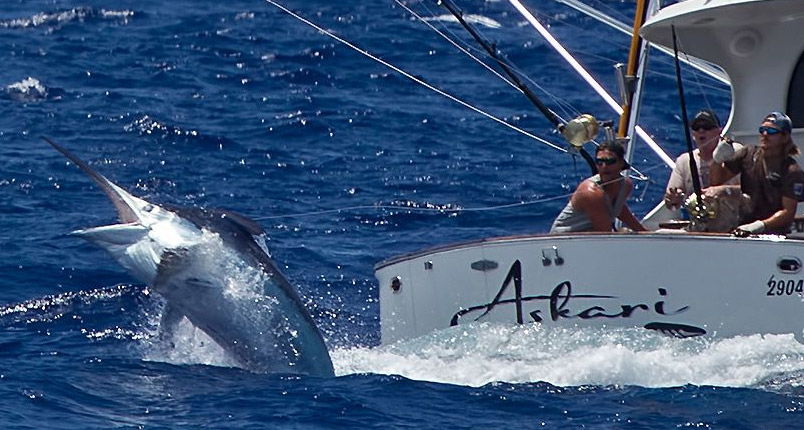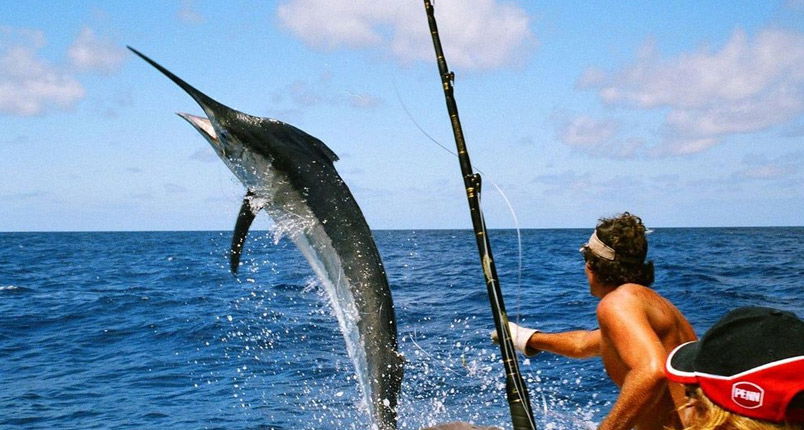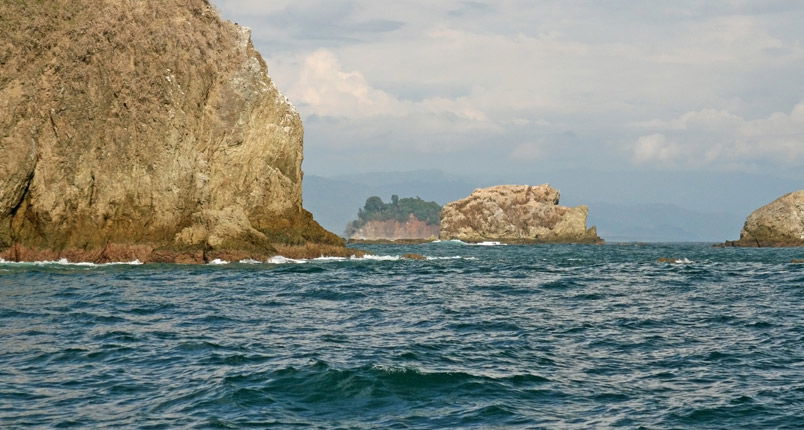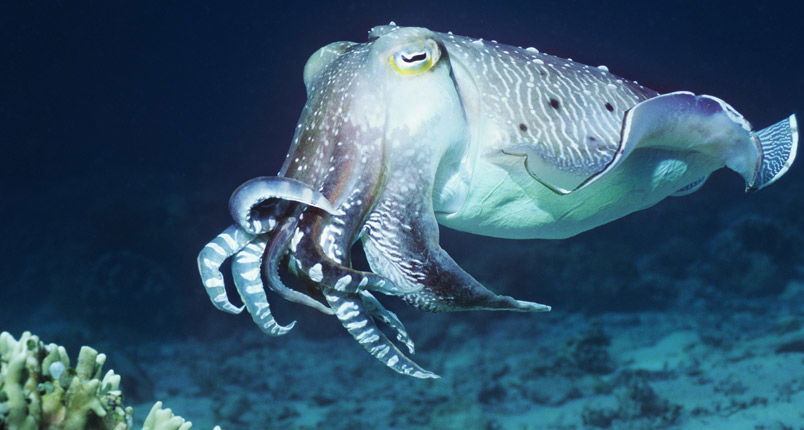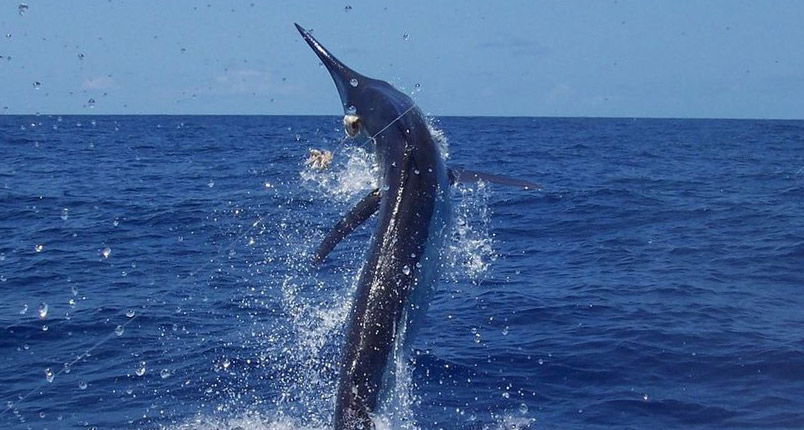There is a stark difference in the maximum sizes of a male and a female black marlin. Males can grow to lengths of 2.7-3 m (9-10 ft), while females can reach lengths of over 4.5 meters (15 ft)! As a result, females are much heavier than males as well. Females can reach up to 726 kg (1,600 lb), while males rarely weigh in over 226 kg (500 lb). In a size comparison with other billfish, they are the second largest species, only second to blue marlin. The largest marlin ever caught recreationally was a staggering 707.6 kg (1,560 lb) black marlin in Peru, caught in 1953.
